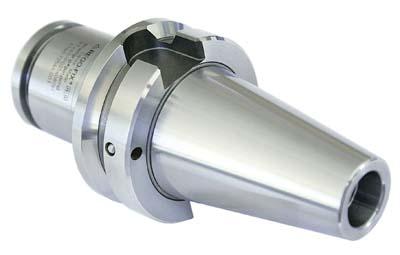
REGO-FIX is introducing the new REGO PLUS line of toolholders. Fully compatible with all BIG PLUS spindles, these new toolholders are licensed by BIG Daishowa. The new REGO PLUS product series will include a full line of ER system toolholders, as well as a full line of powRgrip system toolholders. All products in the line are made by REGO-FIX at its Switzerland manufacturing facility and hold to the strict Swiss standards that the company is known for. The new REGO PLUS line offers several advantages to manufacturers working with high precision milling machines equipped with the BIG PLUS system. These include better TIR, improved tool stiffness, increased quality of surface finishes and higher machine accuracies. All REGO PLUS products are designed for form B coolant and accommodate through-the-taper coolant as a standard feature.
Contact Details
Related Glossary Terms
- coolant
coolant
Fluid that reduces temperature buildup at the tool/workpiece interface during machining. Normally takes the form of a liquid such as soluble or chemical mixtures (semisynthetic, synthetic) but can be pressurized air or other gas. Because of water’s ability to absorb great quantities of heat, it is widely used as a coolant and vehicle for various cutting compounds, with the water-to-compound ratio varying with the machining task. See cutting fluid; semisynthetic cutting fluid; soluble-oil cutting fluid; synthetic cutting fluid.
- gang cutting ( milling)
gang cutting ( milling)
Machining with several cutters mounted on a single arbor, generally for simultaneous cutting.
- milling
milling
Machining operation in which metal or other material is removed by applying power to a rotating cutter. In vertical milling, the cutting tool is mounted vertically on the spindle. In horizontal milling, the cutting tool is mounted horizontally, either directly on the spindle or on an arbor. Horizontal milling is further broken down into conventional milling, where the cutter rotates opposite the direction of feed, or “up” into the workpiece; and climb milling, where the cutter rotates in the direction of feed, or “down” into the workpiece. Milling operations include plane or surface milling, endmilling, facemilling, angle milling, form milling and profiling.
- stiffness
stiffness
1. Ability of a material or part to resist elastic deflection. 2. The rate of stress with respect to strain; the greater the stress required to produce a given strain, the stiffer the material is said to be. See dynamic stiffness; static stiffness.
- total indicator runout ( TIR)
total indicator runout ( TIR)
Combined variations of all dimensions of a workpiece, measured with an indicator, determined by rotating the part 360°.

